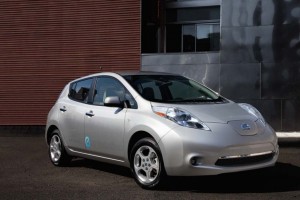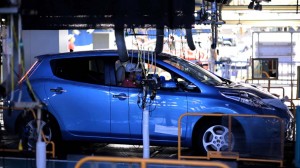With production finally ramping up, sales of the Nissan Leaf are on the rise and should grow even faster, in the coming months, as the maker expands the number of U.S. markets where the battery car is available.
But electric aficionados could be in for an unpleasant surprise, with the introduction of the updated 2012 Nissan Leaf. The modified model will get new equipment, such as a winter driving package and a more powerful quick charger, but it will also cost more, the company today revealed.
“Many enthusiastic consumers have eagerly anticipated ordering a Nissan LEAF of their own, and now we can make zero-emissions mobility a reality in more markets,” said Brian Carolin, senior vice president, Sales and Marketing, Nissan North America.
Leaf was initially available in seven states: Arizona, California, Hawaii, Oregon, Tennessee, Texas, and Washington. On Monday, July 25, the maker will add Alabama, Florida, Georgia, Illinois, Maryland, Mississippi, North Carolina, South Carolina, Virginia and Washington, D.C.
Meanwhile, Carolin noted, the Japanese maker is also upgrading Leaf for 2012. “In response to direct feedback from Nissan LEAF owners, the features that customers want most will come standard on the 2012 Nissan LEAF – including quick charging and cold-weather features.”
The latter package will include such things as seat heaters. Studies show that motorists are less likely to turn the heater of a vehicle on full blast – which, in a battery car seriously degrades range – if they have heated seats.
As for the quick charger, the current Leaf’s built-in charger is a modest 3.3 kilowatt system, which requires almost 8 hours even on 220 volts. For 2012, the top-line SL trim Leaf will get a Level 3 DC quick charge port that is capable of yielding an 80% charge in just 30 minutes. It was previously a $700 option. The downside is that there are only a handful of those 440-volt chargers available to the public right now. But there are plans in the works to add hundreds of them around the country in the next several years.
Unfortunately, Leaf customers will have to wait until 2013 to get an upgraded Level 2 charger, which increases the built-in charger’s capacity from 3.3 to 6.6 kilowatts – about the same as the system that will be offered on the upcoming Ford Focus Electric and Ford C-Max battery-electric microvan. That should reduce home charging times to under 4 hours.
The added features on the 2012 Nissan Leaf will drive the base price up by 7.4%, or $2,420, to $35,200. The SL model will start at $37,250, compared with $34,570 for the 2011 version. (Add another $850 for destination charges.)
For those who prefer to lease, Nissan will add $30 to the monthly fee, bringing the total to $369 for 2011.
The increased price tag for the 2012 Leaf will narrow the gap between the Nissan batter-electric vehicle and the plug-in hybrid most often seen as its chief competition. The 2011 Chevrolet Volt carried an MSRP of $41,000. For 2012, however, Chevy is cutting the base price to $39,995.
Competition will become even more intense in the upcoming model-year, however, as an assortment of new battery-based vehicles come to market, including the C-Max, Focus Electric, Toyota Prius Plug-in and the Mitsubishi i. Formerly known as the iMiEV, the Japanese battery car will start at $27,990, though it will also be smaller than either the Volt or Leaf.
Qualified buyers will also be eligible for $7,500 in federal tax credits and additional incentives in more than a dozen states.
So far, Nissan had delivered more than 4,000 Leaf sedans to U.S. motorists.


